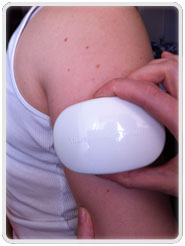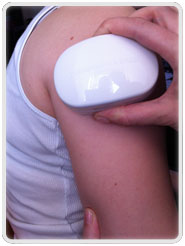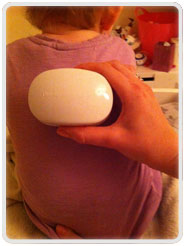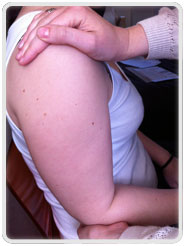Wilbarger Therapressure Protocol
An effective treatment of sensory defensiveness, which Annie has been trained in, and taught by Wilbarger. This protocol is often known as ‘brushing’ technique. Below is a series of photographs demonstrating Therapressure techniques applied to both adults and children and Joint Compression following Therapressure treatment.
Therapressure Wilbarger Techniques




We can assess for sensory defensiveness, and then design appropriate treatment package. This may involve trialing the brushing, which we would teach to those administering it, and we monitor the use of this, being flexible and effectively ‘on-call’ in the days following the commencement of this approach. We offer a tailor made sensory diet to be used alongside it. We are happy to teach parents, grandparents and teaching staff how to administer the technique to ensure that the child receives the treatment as intended.


Therapressure Pressure Applied to Knees and Hips